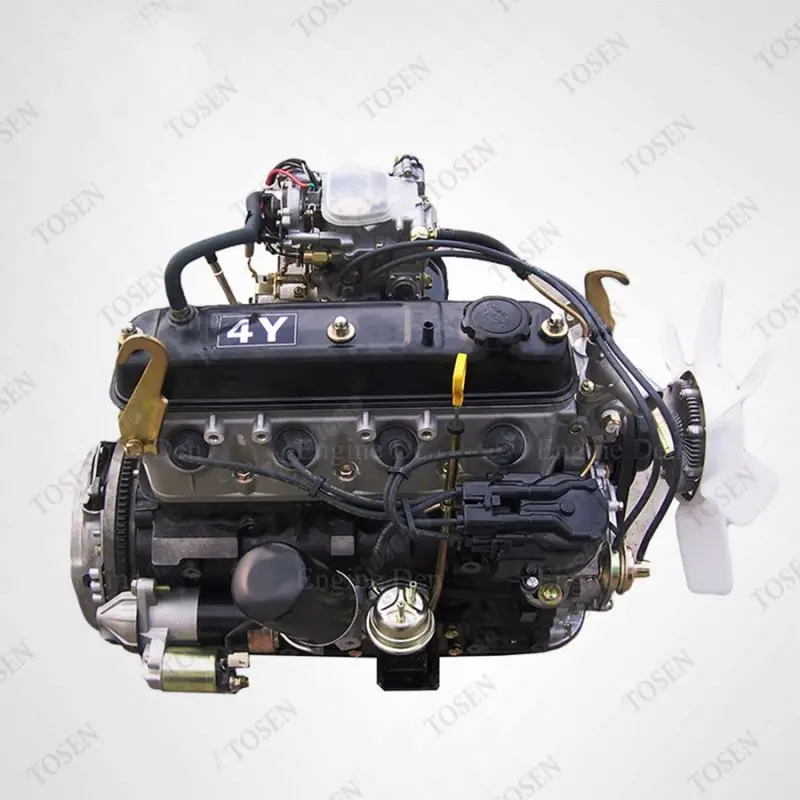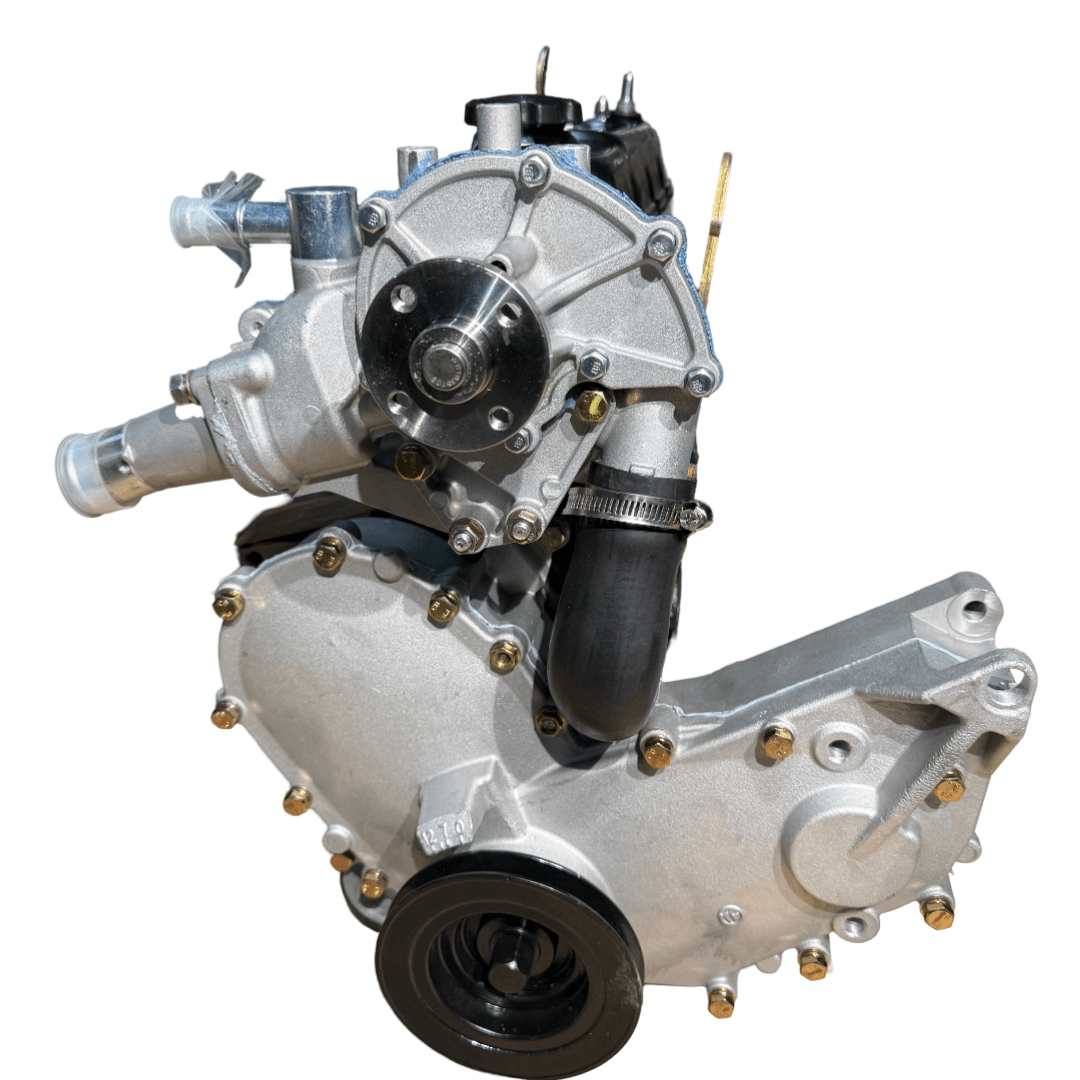Key Features That Make the 4Y Engine a Reliable Option for Drivers
Key Features That Make the 4Y Engine a Reliable Option for Drivers
Blog Article
Why the Engine Is the very best Option for Efficiency and Efficiency in Your Vehicle
The engine remains an essential component in vehicle design, largely as a result of its substantial influence on both efficiency and effectiveness. As improvements in technology enable smaller engines to deliver remarkable power while enhancing gas economy, the combination of functions such as turbocharging and crossbreed systems comes to be increasingly important. These innovations not only boost driving experience yet also address environmental concerns. The question emerges: exactly how do these aspects integrate to redefine our understanding of automotive efficiency? Discovering this equilibrium reveals deeper insights into the future of engine design.
Comprehending Engine Types
Comprehending the various kinds of engines is vital for optimizing performance and efficiency in vehicle design. The primary engine kinds include interior combustion engines (ICE), electrical engines, and crossbreed systems, each offering distinct benefits and restrictions.
Inner burning engines, which can be further classified right into fuel and diesel versions, rely on the combustion of fuel to produce power. Gasoline engines commonly supply higher RPMs and better velocity, while diesel motor are understood for their torque and gas performance, making them suitable for sturdy applications.
Electric engines, on the various other hand, use electric motors powered by batteries or fuel cells. They provide instantaneous torque delivery, resulting in smooth velocity and lower discharges. The performance of electrical engines is considerably higher than that of ICEs, making them a prominent option for eco-conscious consumers.
Crossbreed systems incorporate both inner combustion and electric engines, leveraging the strengths of both technologies. They optimize fuel intake by using electric power at lower rates and switching to gas or diesel for greater speeds or larger tons.
Picking the best engine kind is necessary for accomplishing desired efficiency metrics and ecological sustainability in modern-day auto design.
The Effect of Engine Dimension
Engine dimension frequently plays a pivotal duty in identifying a car's efficiency and performance. Normally determined in liters or cubic centimeters, engine size directly affects the power output and torque attributes of a vehicle. Bigger engines usually produce more horsepower, enabling higher acceleration and greater full throttle. This is particularly helpful in applications calling for durable efficiency, such as sporting activities autos and heavy-duty trucks.
Nonetheless, increased engine dimension usually associates with decreased gas effectiveness. Larger engines eat even more gas, leading to greater exhausts and functional prices. Producers must balance the need for power with the demand for fuel economic climate. Smaller sized engines can provide appropriate performance for everyday driving while advertising far better effectiveness, making them a prominent choice in portable and mid-size automobiles.
Additionally, improvements in engine style, such as turbocharging and direct gas shot, enable smaller sized engines to achieve power levels similar to their larger equivalents. This fad emphasizes the significance of not only focusing on engine size however additionally taking into consideration overall car style and modern technology (4y engine). Inevitably, the influence of engine dimension on performance and efficiency highlights the requirement for customers to evaluate their particular driving preferences and needs when choosing a vehicle
Advanced Engine Technologies
Innovations in engine innovations have actually significantly reshaped the landscape of automotive performance and performance, structure upon the foundational concepts established by engine dimension. Significantly, developments such as turbocharging and direct gas injection have made it possible for smaller sized engines to provide power degrees previously connected with bigger equivalents. Turbochargers compress air going into the engine, enabling raised power result without a matching rise in engine size, while direct injection maximizes gas distribution, enhancing burning performance.
Additionally, variable valve timing systems have actually arised as a crucial innovation, allowing engines to readjust valve operation based upon driving problems. This adaptability boosts both efficiency throughout velocity and gas efficiency throughout travelling. Hybrid and electrical engine innovations even more show the shift in automotive style, integrating traditional inner combustion engines with electrical motors to maximize performance while reducing discharges.
Furthermore, developments in materials science have led to lighter, extra sturdy engine parts, further improving performance and long life. The assimilation of advanced electronic devices and engine control read this article units likewise enables real-time modifications, making certain optimum performance throughout different conditions. Jointly, these innovative engine innovations not just improve vehicle efficiency but additionally add to an extra lasting automotive future, showing the ongoing advancement of engine style.
Harmonizing Power and Performance
Striking an equilibrium in between power and effectiveness is vital in modern-day automobile layout as producers seek to fulfill significantly rigid emissions laws while satisfying customer need for efficiency (4y engine). The difficulty exists in optimizing engine characteristics to provide robust power output without compromising fuel economic climate
To accomplish this balance, engineers use various techniques, such as turbocharging, which enhances engine power forcibly in more air, permitting a smaller engine displacement that enhances fuel effectiveness. Variable valve timing technologies likewise play a significant function, making it possible for engines to readjust their performance characteristics based upon driving problems, thereby boosting both power and effectiveness.
Additionally, advancements in products and making methods have actually led to lighter engine parts, which minimize overall automobile weight and boost fuel efficiency without endangering power. Hybrid innovations have additionally become a practical option, integrating standard inner burning engines with electric powertrains to offer a boost in performance while preserving reduced discharges.

Future Patterns in Engine Design

Additionally, the development of sophisticated materials, such as high-strength alloys and light-weight composites, is readied to revolutionize click for info engine components. These materials not only reduce weight but also improve thermal efficiency, consequently maximizing efficiency. Additionally, suppliers are exploring variable compression proportions, allowing engines to adapt to different driving conditions, enhancing both power output and gas economic climate.
Further, the rise of artificial knowledge and device learning in engine style is making it possible for predictive upkeep and real-time efficiency optimization. This innovation can cause engines that self-adjust for maximum performance based upon driving patterns.

Verdict
To conclude, the engine functions as a critical element in attaining ideal efficiency and efficiency in modern-day vehicles. Advanced innovations, such as turbocharging and hybrid systems, improve power output while minimizing fuel usage and emissions. The interplay in between engine dimension and layout remains to evolve, driving advancements that balance exciting efficiency with environmental sustainability. As vehicle engineering advances, the concentrate on creating effective, effective engines will certainly stay extremely important fit the future of transportation.
In addition, advancements in engine design, such as turbocharging and straight fuel shot, enable smaller engines to accomplish power degrees equivalent to their larger equivalents.Innovations in engine innovations have substantially improved the landscape of vehicle efficiency and effectiveness, building upon the fundamental principles established by engine dimension. Turbochargers compress air entering the engine, allowing for increased power result without an equivalent increase in engine size, while direct shot maximizes gas delivery, improving combustion efficiency.
Hybrid and electric engine modern technologies even more illustrate view it now the change in vehicle layout, combining typical internal combustion engines with electric motors to make best use of efficiency while reducing exhausts.
Collectively, these sophisticated engine modern technologies not only improve automobile efficiency but additionally contribute to an extra sustainable vehicle future, showing the recurring development of engine layout. (4y engine)
Report this page